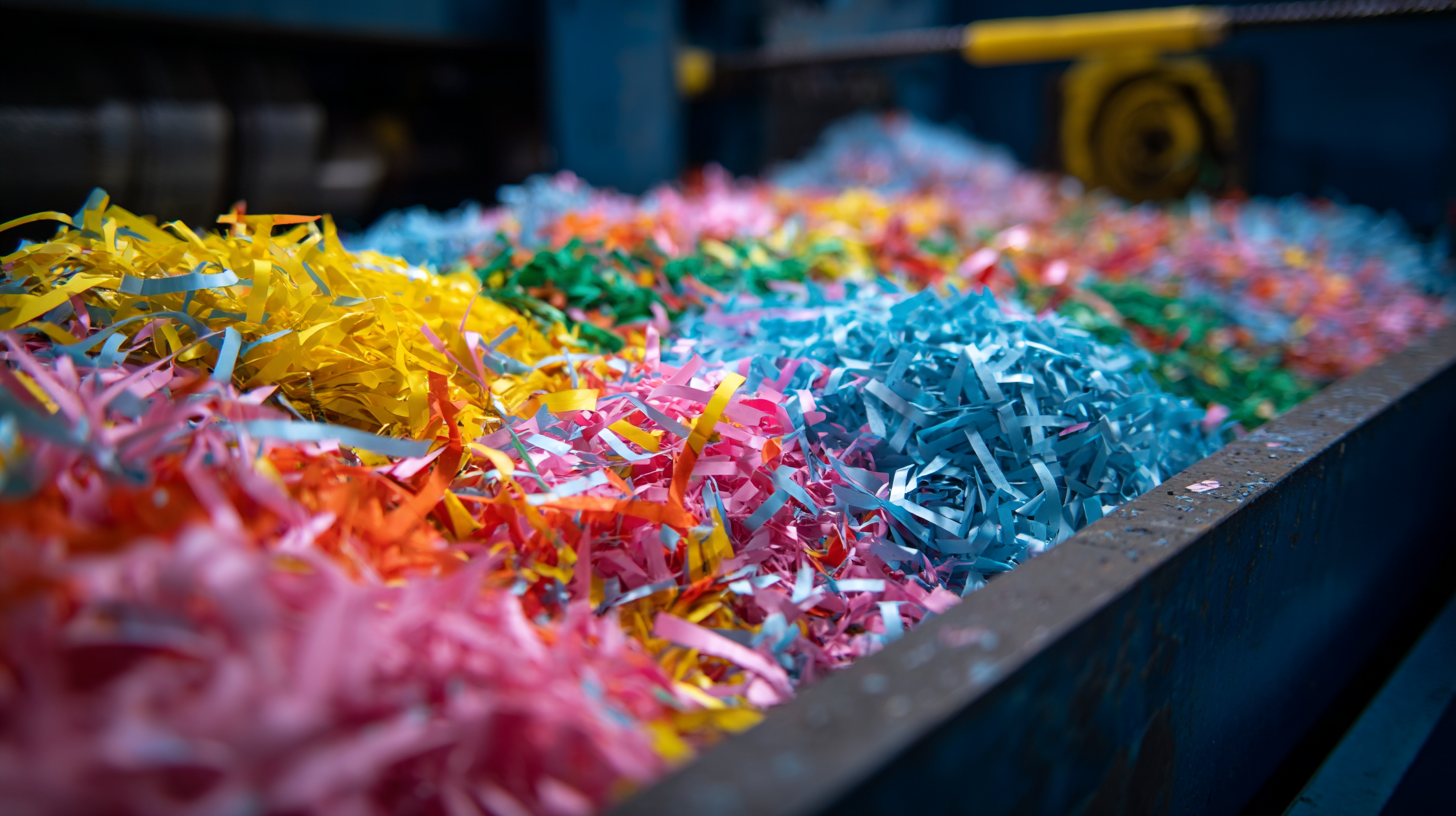In the quest for sustainable manufacturing, the importance of selecting the right equipment cannot be overstated. One crucial tool that stands out is the PLA shredder, which plays a vital role in the proper processing of polylactic acid (PLA), a bioplastic derived from renewable resources. As eco-conscious practices gain momentum in the industry, the ability to efficiently shred PLA waste not only supports a circular economy but also reduces environmental impact. This blog will explore how to choose a high-quality PLA shredder that meets the needs of manufacturers striving for sustainability. By understanding the key features, capabilities, and considerations in selecting the best PLA shredder, companies can enhance their waste management practices and contribute to a greener, more sustainable future.

PLA shredders play a pivotal role in promoting sustainable manufacturing practices, particularly in the realm of bioplastics. According to a report by Smithers Pira, the global bioplastics market is expected to reach approximately $16 billion by 2024, largely driven by increasing consumer demand for environmentally friendly materials. As manufacturers embrace polylactic acid (PLA) as a viable alternative to petroleum-based plastics, effective recycling and processing systems become essential. PLA shredders not only streamline the recycling process but also help reduce waste and carbon footprints associated with traditional plastics.
Furthermore, a study from the European Bioplastics Association emphasizes that by recycling PLA materials through efficient shredding processes, manufacturers can contribute to a circular economy. This practice minimizes virgin material use, thereby conserving resources and reducing emissions. Efficient PLA shredders enhance the granulation of post-industrial and post-consumer PLA waste, making the re-manufacturing of bioplastic products more feasible and cost-effective. As the industry shifts towards sustainability, investing in cutting-edge PLA shredders will be crucial for companies aiming to remain competitive while adhering to eco-friendly practices.
| Feature | Description | Benefit |
|---|---|---|
| Energy Efficiency | Utilizes lower energy consumption during operation. | Reduces carbon footprint and operating costs. |
| Durability | Built with high-quality materials for long-lasting performance. | Lowers replacement and maintenance costs over time. |
| Size Reduction Capability | Effectively shreds PLA into manageable sizes for recycling. | Facilitates efficient processing in recycling plants. |
| Safety Features | Includes automatic shutoff and jam protection. | Ensures operator safety and reduces downtime. |
| Noise Reduction | Engineered to operate at lower noise levels. | Improves workplace environment and employee comfort. |
In the realm of sustainable manufacturing, the choice of equipment plays a pivotal role in determining operational efficiency and environmental impact. High-quality PLA (Polylactic Acid) shredders are essential for processing biodegradable materials, thus paving the way for eco-friendly practices. Key features to consider when selecting a PLA shredder include durability, energy efficiency, and the ability to produce uniform particle sizes. According to a 2022 report from the International Biodegradable Plastics Association, efficient shredding can enhance biodegradation rates by up to 30%, making these machines instrumental in waste reduction efforts.
Moreover, modern PLA shredders often incorporate advanced technology that significantly reduces energy consumption. A study published in the Journal of Cleaner Production illustrates that top-tier shredders can operate at 20% less energy than their counterparts, aligning with the sustainability goals of manufacturers. The integration of user-friendly controls and real-time monitoring systems also ensures that operators can maintain optimal performance and minimize waste. As the circular economy gains momentum, investing in high-quality PLA shredders is not only a practical choice but also a strategic imperative for companies committed to sustainable practices.
This chart illustrates the importance ratings of key features in high-quality PLA shredders essential for sustainable manufacturing. Each feature is rated on a scale from 1 to 10, highlighting the focus on energy efficiency and durability as the most critical aspects for eco-friendly operations.
The PLA shredder industry is poised for significant growth, aligned with broader trends in sustainable manufacturing. As the demand for biodegradable plastics increases, the market for PLA shredders is expected to expand as well. Industry projections suggest that the vegetation equipment market, which includes shredding technologies, will surge from $7.62 billion in 2025 to $15.25 billion by 2032, reflecting a robust compound annual growth rate (CAGR) of 10.4%. This growth is indicative of a broader move towards environmentally friendly practices within various sectors, particularly in the wake of increasing regulations on plastic use.
By 2025, the emphasis on sustainable solutions will drive innovation in the PLA shredder market. With cement consumption expected to witness an uneven recovery, industries are likely to pivot towards more sustainable raw materials, further boosting the need for efficient shredding solutions. The rising demand for eco-friendly products mandates that manufacturers invest in technologies such as PLA shredders, which not only enhance production efficiency but also align with global sustainability goals. This shift illustrates the critical role of advanced shredding equipment in facilitating the transition to a circular economy within manufacturing processes.

When selecting the right PLA shredder for sustainable manufacturing, it's essential to consider various factors that align with your specific production needs. Sustainability in manufacturing requires equipment that not only processes materials efficiently but also minimizes waste. Look for shredders that are designed with energy efficiency in mind, as this reduces the carbon footprint of your operations while maximizing throughput. Characteristics such as cutting mechanism, motor strength, and sizing capabilities are vital in ensuring that the shredder can handle the volume and type of PLA waste generated in your facility.

Additionally, compatibility with your existing waste-to-energy processes is crucial. Suppliers emphasize the importance of understanding how shredders will integrate into your overall waste management system. This includes evaluating maintenance requirements, ease of operation, and the potential for automation. Selecting a shredder that can handle the intricacies of PLA material without compromising performance is key to achieving a sustainable production cycle. Ultimately, the right choice enhances both material recovery rates and operational efficiency, supporting your commitment to environmentally responsible manufacturing practices.
The growing emphasis on sustainable manufacturing has brought PLA shredders into the spotlight. These machines are not merely functional; they are at the forefront of integrating innovative technologies to enhance their efficiency. Advanced features like automated sorting systems and smart sensors allow for real-time monitoring, ensuring that the shredding process is optimized for maximum output and minimal waste. This technological advancement allows manufacturers to significantly reduce disposal costs and improve their environmental footprint.
When selecting a PLA shredder, consider the compatibility of the machine with various types of bioplastics. Ensure that it is designed to handle different sizes and compositions effectively. A shredder equipped with interchangeable blades can enhance its versatility, facilitating a smoother transition between materials.
Another tip is to look for shredders that come with energy-efficient motors. Investing in a machine that minimizes energy consumption can lead to lower operating costs and contribute to a greener manufacturing process. Additionally, implementing routine maintenance schedules for the shredder can prolong its lifespan and ensure consistent performance, ultimately leading to less downtime and increased productivity.
